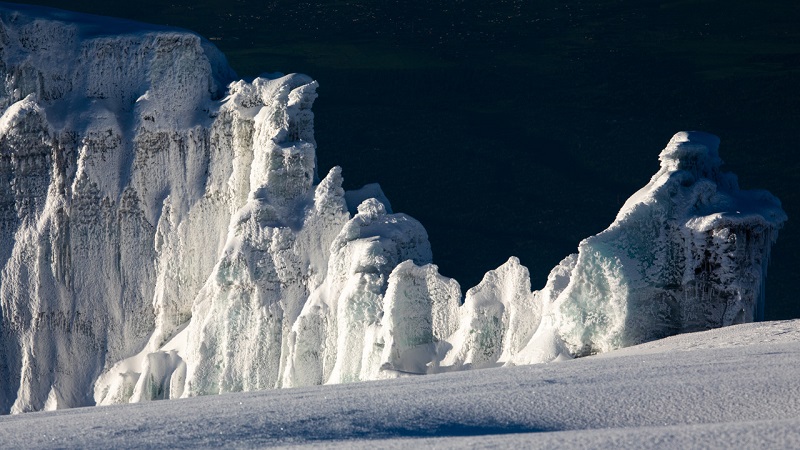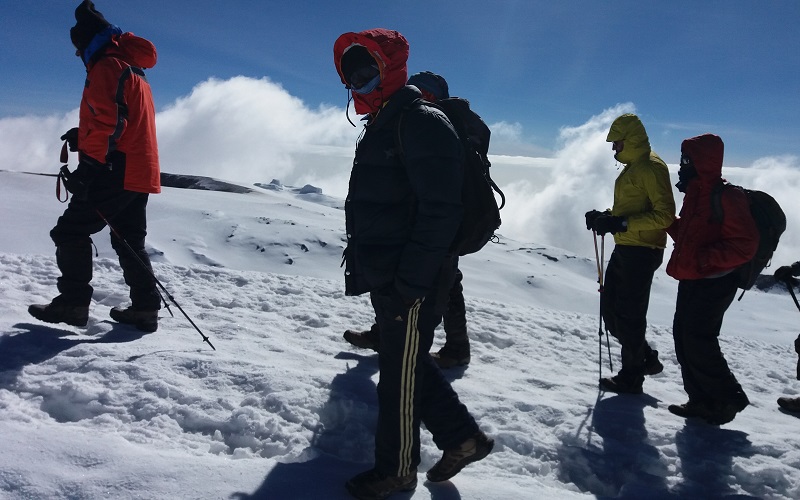
Kilimanjaro Lemosho Route
This route approaches Mount Kilimanjaro from the west. It offers a chance to visit Shira Plateau (Cathedral peak) and Shira Caldera.
Lemosho Route crosses from Shira Ridge to Shira 2 Camp, in a pleasant hike. Climbers encounter low traffic until the route joins the Machame route. Afterwards, Lemosho follows the same route as Machame Route through Lava Tower, Barranco and Barafu, known as the southern circuit.
The minimum days required for this route is 7 days, but eight days is recommended as it will give more chance to acclimatize and reach the summit. Like Machame,this is a scenically spectacular and varied route. Lemosho is highly recommended and it has an abundance of wildlife such as Colobus monkeys,different species of birds and small jackals which come over to forage during dry season from Longido game controlled area.
Route Overview
Duration: 7-8 days Distance: 70 km (43 miles) Difficulty: Moderate to Challenging Best for: Climbers seeking a scenic, less crowded route with plenty of wildlife and panoramic views.
Scenic Highlights
The Lemosho Route stands out for its diverse and dramatic landscapes, beginning with a gentle ascent through the rainforest and gradually transitioning into moorland and alpine desert as you climb higher.
Key highlights include:
Shira Plateau and Shira Caldera: The route crosses the Shira Plateau, offering breathtaking views of the Shira Caldera and Cathedral Peak. This part of the route is less crowded and provides a peaceful and scenic hike.
Lava Tower: As you continue on the route, you’ll pass the Lava Tower, a striking rock formation that offers a great opportunity for acclimatization and spectacular photo opportunities.
Barranco Wall: After Lava Tower, the route continues to the Barranco Camp, where climbers navigate the famous Barranco Wall, a challenging but rewarding section of the climb.
Southern Circuit: The Lemosho Route joins the Machame Route at Barranco Camp, and both routes continue along the southern circuit, passing through Barafu Camp before the final ascent to Uhuru Peak.
Wildlife and Flora
Lemosho offers climbers an abundance of wildlife and natural beauty. As you climb through the diverse ecosystems, you may encounter:
Colobus monkeys: These striking black-and-white monkeys are commonly seen in the lower rainforests.
Birdlife: The route is home to various species of birds, making it a birdwatcher’s paradise.
Small jackals: During the dry season, these jackals can be seen foraging around the mountain, often coming from the nearby Longido Game Controlled Area.
The diversity of wildlife and plant life along the Lemosho Route adds to the route's charm, making it not only a physically challenging adventure but also a rich natural experience.
Climbing Time and Acclimatization
The minimum duration for the Lemosho Route is 7 days, but it is strongly recommended to extend the trek to 8 days. The extra day allows for better acclimatization, which is critical for a successful summit attempt. The gradual ascent and longer duration significantly improve your chances of reaching the summit, as the extra day helps your body adjust to the increasing altitude.
Why Choose the Lemosho Route?
The Lemosho Route is highly recommended for climbers who are looking for a scenic, less-crowded trek with a bit more time to acclimatize and experience the diverse ecosystems of Kilimanjaro. With its incredible views, varied terrain, and abundant wildlife, it’s a route that offers both adventure and beauty.
Pros:
- Remote and less crowded, especially in the initial stages.
- Highly scenic, with varied landscapes and stunning views of the mountain.
- Abundant wildlife and natural beauty.
- Extended trek duration improves acclimatization chances.
Cons:
- Slightly longer and more expensive than shorter routes due to the extended duration.
- More challenging in terms of distance and terrain compared to easier routes like Marangu.



